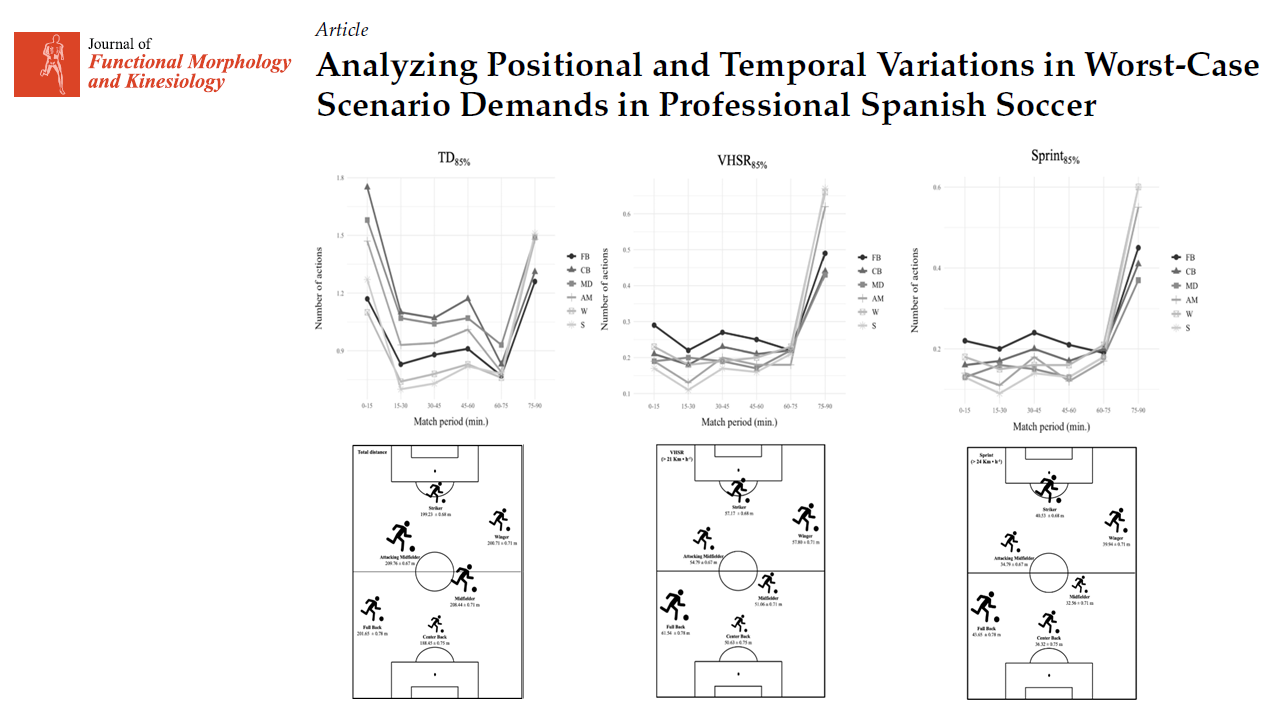
14 May “If you train everyone the same, you’re preparing most of them the wrong way.”
Are you really preparing your players for what actually happens in a match?
Imagine designing each training task with surgical precision. Every meter your full-back runs, every sprint your winger executes, every movement your midfielder makes has a clear purpose. Imagine knowing not just how much they need to run, but when they will reach their peak intensity during a match.
That is exactly what we’ve analysed from the Football Intelligence Department at LALIGA, in collaboration with the University of Extremadura (UEX), in a recently published study: the most demanding moments of a match and how they vary depending on player position and match minute.
The full research, published in an international scientific journal, is available here:
https://doi.org/10.3390/jfmk10020172
But if you’re looking for what you can apply to your training sessions right now, keep reading. This article is made for coaches like you.
Training like they play: the challenge of “most demanding scenarios”
We analysed 67,518 individual player records from all 380 matches in the 2023/24 LALIGA season. We measured the Worst-Case Scenarios (WCS) — that is, the most physically demanding minute experienced by a player during a match. And we also tracked how often players reached 85% of their peak performance.
We broke this down by playing position (CB, FB, MD, AM, W, S) and by match period (divided into 15-minute blocks). The goal: to help you train with precision, not just intuition.
The numbers don’t lie: every position, a different battle
1. Full-Backs: the most physically punished
- They covered more meters per minute in their most demanding moment than any other position.
- They also reached 85% of that peak more often than others.
If you’re not training your full-backs to constantly switch between attacking and defending roles with high intensity, you’re leaving them unprepared.
2. Wingers and Strikers: pure explosiveness
- They recorded the highest efforts above 21 and 24 km/h, especially in the final 15 minutes of the match.
It’s not enough to run sprints in training. You need to simulate the emotional and tactical context of a late-match push for a goal.
3. Centre-Backs and Midfielders: endurance and volume
- They didn’t top the sprint stats, but they accumulated more total distance during their WCS than anyone else.
Design drills that emphasise continuous movement and positional discipline, not just explosive actions.
Minute 85 can be more demanding than minute 5
- Many assume the toughest part of the match is the start. That’s a mistake.
- In the 75–90 minute period, attacking players (AM, W, S) reach 85% of their WCS more frequently than at any other time.
- The first 15 minutes are also demanding, but not for every role.
Your training should reflect this: if all your drills are toughest at the beginning, you’re training against how players experience the game.
How to apply this knowledge to your training sessions
This study is more than theory. It’s a practical tool to improve planning, individualise workloads, and reduce injury risk.
Key takeaways to implement immediately:
- Customise drills by position. A one-size-fits-all approach no longer makes sense.
- Increase density in exercises for full-backs, wingers, and strikers.
- Replicate match moments, especially end-game scenarios.
- Use sustained tempo drills for CBs and MDs, without long breaks.
- Use tracking tools to monitor whether you’re reaching actual WCS levels.
Why this matters
Because matches are decided in the details. And those details depend on how your players respond during the most demanding moments. This study lets you stop training “just in case” and start training because we know what really happens.
Training everyone the same is easier. But as this research shows, training everyone the same is training most of them the wrong way.
Read the full paper here:
https://doi.org/10.3390/jfmk10020172


